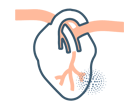Painel de Precisão de Defeitos Cardíacos Congênitos
Os defeitos cardíacos congênitos (CC) são o tipo mais comum de defeito de nascença. Eles incluem anormalidades na estrutura do coração que ocorrem antes do nascimento. Esses defeitos ocorrem durante a gravidez enquanto o feto se desenvolve no útero.




